Content Row
Highlights
Grants: Applications Available for Extreme Heat Facilities and Planning Grant
Legal: Purchasing and Procurement Guidance Webinar
Events: County Spelling Bee and STEAM Nights Coming Up!
Learning Corner: Recommended Literature List Update Now Available
Professional Development: California Dyslexia Initiative Virtual Training, June 11 - 12
TCOE Dispatch 2024-02 by Jeff Morris
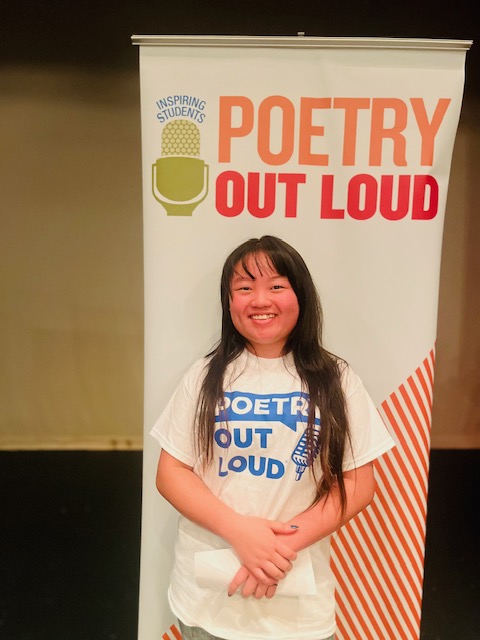 Monday, February 11 marked an evening of strong poet performances as this year’s countywide Poetry Out Loud competition featured “potential Emily Dickinsons and Edgar Allen Poes” from across Trinity County. These young word artists recited and performed works of prose and poetry in hopes of moving forward to state level competitions.
Monday, February 11 marked an evening of strong poet performances as this year’s countywide Poetry Out Loud competition featured “potential Emily Dickinsons and Edgar Allen Poes” from across Trinity County. These young word artists recited and performed works of prose and poetry in hopes of moving forward to state level competitions.
While decisions with art competitions are not always as clear cut as other disciplines, one winner was chosen from among this year’s 8 participants with Mercedes Thao from Hayfork High School rising to the top. Judah Ottem-O’Connell from Trinity High School was a close 2nd place.
Organized by the Trinity County Arts Council, the Trinity County Office of Education and other local organizations, this annual event did not disappoint with performances from students from across Trinity County.
Joanne Tucker, instructional coach from the Trinity County Office of Education describes the benefits of Poetry Out Loud that include inspiring students, “with the confidence to make themselves heard using one of the most powerful tools at their disposal - Art. Participating in this program is an impactful and often life-changing experience for young artists. Students interact with the words of the masters, build personal relationships with their works, and create a sense of shared ownership over their artwork, branded by the student's own technique of volume, pitch, pace, and personal point of view.”
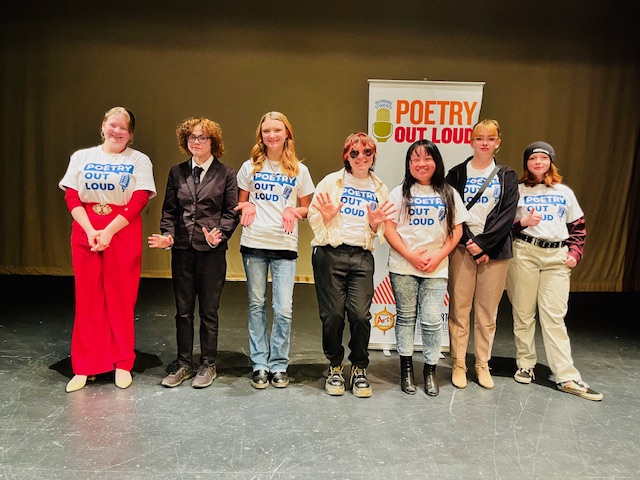 The Poetry Out Loud competition begins with school teams and classroom practices that lead to a school-wide poetry recital competition. The top-ranking participants from each school compete at the county level. Trinity County winners receive $100 and the opportunity to compete at the California state level, where they perform 3 memorized poems. At the state and national levels, contestants are also invited to submit their own original poems. With more than 40 contestants in the state competition, the top scorer will win $200 and a place in the National Finals competition. The national champion wins $20,000 in college scholarship funds.
The Poetry Out Loud competition begins with school teams and classroom practices that lead to a school-wide poetry recital competition. The top-ranking participants from each school compete at the county level. Trinity County winners receive $100 and the opportunity to compete at the California state level, where they perform 3 memorized poems. At the state and national levels, contestants are also invited to submit their own original poems. With more than 40 contestants in the state competition, the top scorer will win $200 and a place in the National Finals competition. The national champion wins $20,000 in college scholarship funds.
We hope to report back on Ms. Thao’s performance at the state level competitions and encourage all students to apply for next year’s competition.
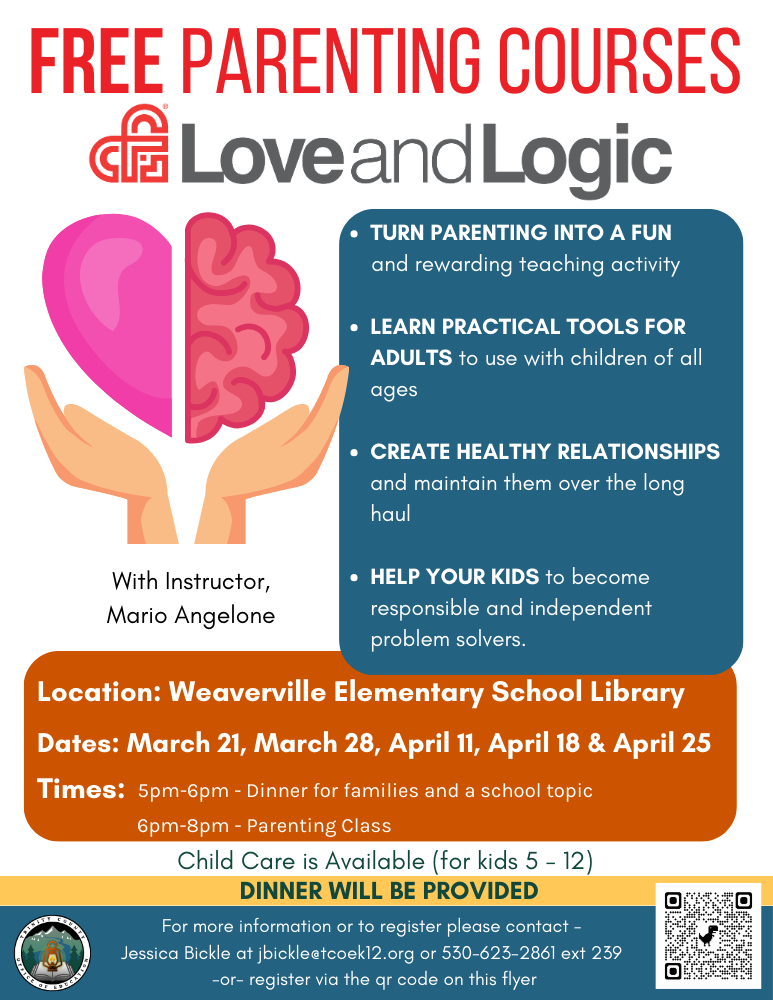 Trinity County Office of Education is offering a FREE Love and Logic Parenting Class Series beginning in March as part of our Adult Education Program. We will be providing dinner for families and FREE childcare for children aged 5-12.
Trinity County Office of Education is offering a FREE Love and Logic Parenting Class Series beginning in March as part of our Adult Education Program. We will be providing dinner for families and FREE childcare for children aged 5-12.
Location: Weaverville Elementary School Library
Dates: March 21st, March 28th, April 11th, April 18th & April 25th
Time: 5:00 - 6:00 pm Dinner for families and a school topic
6:00 - 8:00 pm Parenting Class
Class Details: Parents from all walks of life will be able to utilize the Love and Logic Curriculum to help create happy, resilient, and responsible kids.
Parents will learn tips for all ages of kids on how to:
- End arguing and manipulation
- Neutralize defiance
- Replace anger and frustration with empathy
- End bedtime battles
- Set kids up for success by allowing them to make small mistakes when the price tag is small
- And much more!
Want to Participate? Please register in person by completing the registration form available at TCOE or complete your registration online via http://bit.ly/42nhSd2
For additional information, please contact:
Jessica Bickle by email jbickle@tcoek12.org or by phone 530-623-2861 ext. 239
January 2024 edition of TCOE Dispatch.
Highlights
- Grants: Extreme Heat Facilities and Planning Grant opens before end of March 2024
- Legal Updates for 2024
- State Budget News
- Learning Corner: Project Arise Releases Free Modules for Reading Intervention
- Professional Development: CDE, Multilingual Support Division, to host a monthly webinar series to revisit the California English Language Development (ELD) Standards
TCOE Dispatch 2024-01 by TCOE Communications
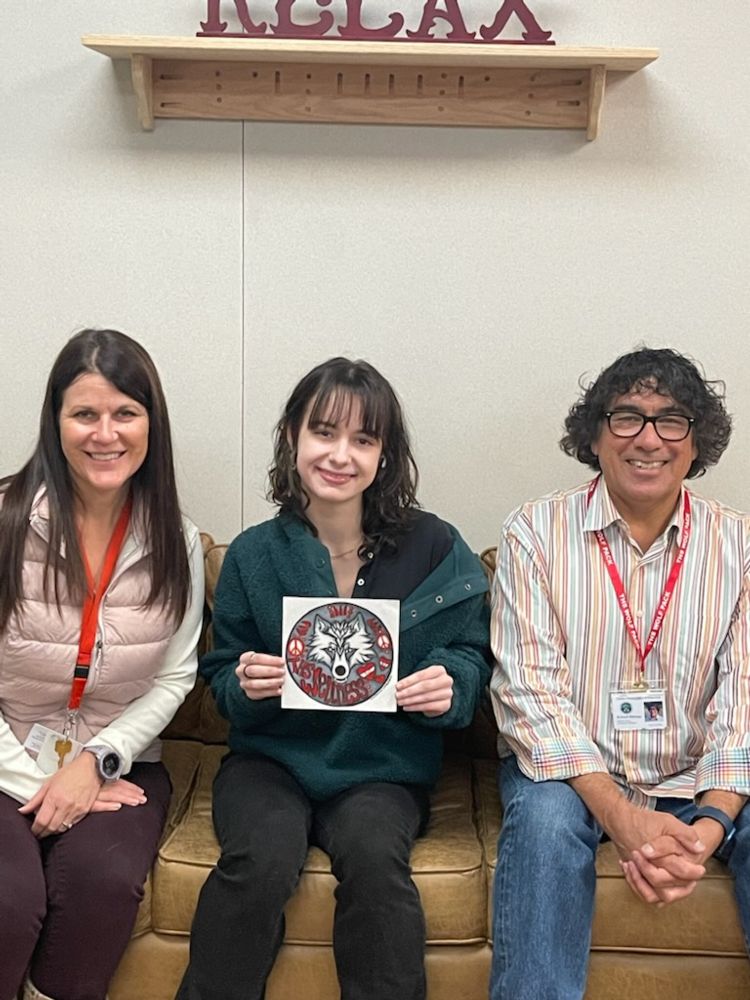 Built through a mix of grant funds and TAUSD allocations, the Wellness Center at Trinity High officially opened, adorning a student-produced logo.
Built through a mix of grant funds and TAUSD allocations, the Wellness Center at Trinity High officially opened, adorning a student-produced logo.
What Is a Wellness Center?
Trinity High isn’t the first school in the county to open a Wellness Center. There is a center at Weaverville Elementary and Wellness Rooms at Burnt Ranch, Douglas City, and Lewiston. These are multi-purpose mental health spaces. Students can join learning groups, work on individual plans for self-improvement, or use the space temporarily to manage their behavior.
“It has been terrific to have an opportunity for students to have a space to decelerate their emotions, sort out challenges that they may be having in the school day, and a location where students can confide in other caring adults on a periodic basis, as needs arise,” said Trinity High Principal Corey Helgesen.
The Trinity County Office of Education (TCOE) is working with Trinity County Behavioral Health and hoping to get more grant funding. They want to expand and add Wellness Centers to more schools that are part of TCOE’s Wellness programs.
Students Choosing to Visit
For general visits, students are welcome to sign in to the Wellness Center during breaks such as lunch and after school. Trinity High also implemented a software program called Sown to Grow, which provides multiple social-emotional tools for students and also allows students to request a visit at the Wellness Center, according to Helgesen.
During class periods students can come to the center with their teacher’s permission. The student must have a specific reason to speak with Wellness Center staff or can use the space to regain control over their behavior. Once Wellness Center staff have determined that a student’s needs have been met, the student is sent back to class.
“We are vigilant that Wellness Centers are used as a support, not an escape from their behavior or enabling,” said Jade Tyner, TCOE director of special programs. “These Centers are about providing a way to support students through overwhelming feelings while still holding students accountable to attend class and meet the expectations of their teachers, staff and campus.”
Student Learning Groups
The Wellness Center also hosts learning groups, which last typically 6-8 weeks in length and have no more than 15 students per group. The first group at Trinity High, for example, will focus on peer support, with the goal of identifying and training lead students to attend and co-facilitate other Learning Groups throughout the school year.
The Learning Group topics for the school year can include topics like: managing anxiety, digital citizenship, discrimination, life skills and self-care, anger management, depression, and relationships.
Restorative Programs
Students can also be referred to the Wellness Center by staff when experiencing difficulties and are in need of support through a restorative program.
A restorative program is educationally focused, in which a student works with a Wellness Liaison from TCOE to have an explorative conversation to assess the student’s understanding of the issue, social-emotional history, and any other factors as it relates to the topic and behavior of the student. This conversation is used to determine if the student needs further support or resources from a clinician.
The Wellness Center can also be used by administration to enact restorative practices when a student exhibits behavioral concerns and/or violates school policy. These could be short- or long-term agreements that aim to restore harm that may have been a result of the student’s choices or actions.
If you have questions about Wellness Centers in the county, you can contact TCOE Director of Special Programs Jade Tyner at jtyner@tcoek12.org or 530-623-2861 ext. 244.
SACRAMENTO—The 2023 California School Dashboard is now online with data showing statewide improvements in student outcomes in several areas. The Dashboard is a key component of the state’s school accountability system, which includes the latest data on graduation rates, suspension rates, test scores, English Learner progress, the college/career indicator, chronic absenteeism, and local indicators.
Among other highlights, the 2023 Dashboard shows that students in California are graduating at higher levels than before the COVID-19 pandemic and are missing less class time year-over-year.
The four-year cohort graduation rate for the class of 2023 is 86.2%. While this represents a slight decrease from the class of 2022 (less than one percentage point), California’s overall graduation rate is still higher than pre-pandemic levels. The slight decrease is likely due to the phase-out of Assembly Bill 104, which allowed for temporary flexibility in graduation requirements and course grading policies for high school students during the COVID-19 pandemic.
The 2022–23 four-year adjusted cohort also included more graduates who meet the University of California/California State University admission requirements than prior to the pandemic, with 223,727 students (50.4% of graduates) graduating eligible for admission at California’s public universities.
Additionally, 219 school districts and county offices of education that were previously eligible for differentiated assistance have made significant improvements in student outcomes and are no longer eligible for differentiated assistance. Only 68 school districts and county offices of education became newly eligible for differentiated assistance based on “needs to improve” outcomes for specific student groups. This statewide improvement comes after a record 617 districts and county offices of education were eligible for differentiated assistance in 2022 (following the pandemic).
This statewide improvement is primarily due to improved outcomes on the Chronic Absenteeism indicator, which indicates a reversal of a concerning trend in school attendance that began during the pandemic. The Chronic Absenteeism rate, which measures the number of students who missed 10 percent of the days they were enrolled for any reason, declined to 24.3 percent in 2022–23, which is a 5.7 percentage point decline from an all-time high of 30 percent in 2021–22. California’s reported decrease is greater than the 11-state average reported in October and, notably, equity gaps in Chronic Absenteeism are becoming smaller, with the most vulnerable students improving fastest and no student groups any longer in the lowest “red” or “orange” categories.
“This is encouraging news—and our work is not complete,” said State Superintendent of Public Instruction Tony Thurmond. “We have made an unprecedented investment in services that address the needs of the whole child. We can see that those efforts are paying off, but this is only the beginning. We need to continue providing students with the tools they need to excel, especially now that we are successfully reengaging our students and families, so we can close gaps in achievement in the same way that we have begun to close the equity gaps in attendance and absenteeism.”
Below is the Nov/Dec 2023 edition of TCOE Dispatch.
Highlights
- Grants: A grant from TCOE is available for teachers (apply by January 12!) - see page 11
- Learning Corner: New curriculum releases have been announced from HMH for ELA and math K-12 - see page 20
- Professional Development: Check out an on-demand bundle from the California Dyslexia Initiative (CEUs available) - see page 9
Publication has been optimized for Google Chrome or Firefox. You can also find an ADA-compliant PDF link below.
TCOE Dispatch – Nov/Dec 2023 (Issue 8): https://bit.ly/TCOEDispatch8
- The Table of Contents allows you to go straight to any stories you are interested in, and at the top right of every page is a link back to the Table of Contents.
- Along the bottom right, you can zoom in and out, view a larger version of the page thumbnails, and can make it full screen.
Alternative ADA-compliant PDF: https://bit.ly/TCOEDispatch8-PDF
TCOE Dispatch 2023-11 by TCOE Communications
The 2023 California School Dashboard, which will be released on December 15, 2023, reflects a full return of California’s accountability system with the reporting of status (current year data), change (the difference from prior year data), and performance levels (colors) for most state indicators.
The Dashboard is an online tool designed to help communities across the state access important information about kindergarten through grade twelve schools and districts. The Dashboard features easy-to-read reports on multiple measures of school success.
Below and onto the next page is a quick overview of how the dashboard looks and how to read it when the information becomes publicly available in December for data from the 22-23 school year. You can view more Dashboard 101 resources here:
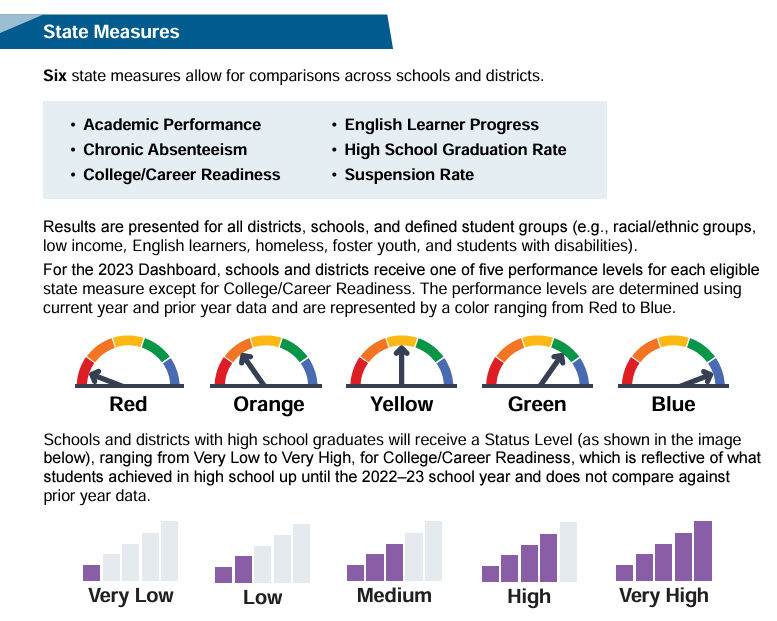
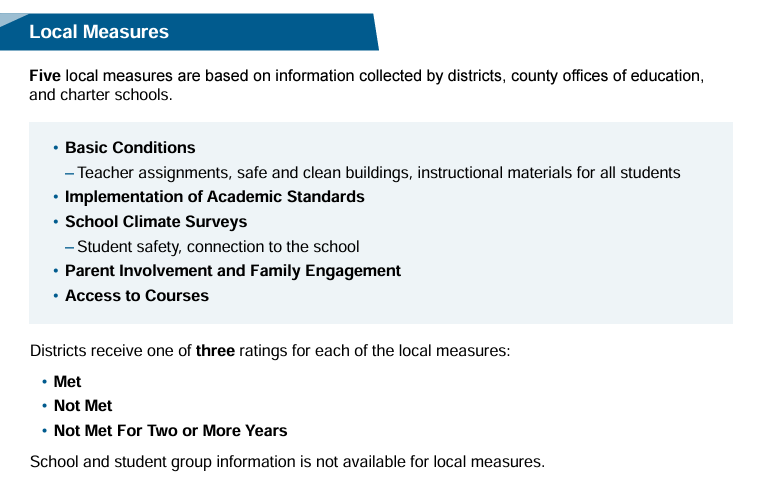
According to Homeless Education Technical Assistance Centers (HETAC), "In 2007, Congress passed its first resolution recognizing November as National Homeless Youth Awareness Month (NHYAM) to build awareness around the issue of youth homelessness, including its causes and potential solutions, and highlight the need to work to prevent homelessness among children and teens.
Since then, November has been a time to elevate the issue of youth homelessness; applaud the efforts of businesses, organizations, and volunteers dedicated to meeting the needs of children and youth experiencing homelessness; and grow the commitment to intensify efforts to prevent and end homelessness among young people in the U.S.
In support of the federal resolution recognizing November as NHYAM, many states, including California, have passed state resolutions recognizing the same.
If you would like to find more information in regards to the housing insecurities that youth face in our state and Trinity County, visit the two links listed below.
- HETAC - California Homeless Education Technical Assistance Centers: https://www.hetac.org/resources/youth-awareness
- Homeless Youth Data for Trinity County - CDE: https://dq.cde.ca.gov/dataquest/DQCensus/HmlsEnrByDTLevels.aspx?cds=53&agglevel=County&year=2021-22
According to the Census Day Point In Time Count for the school year 2022/2023, Trinity County sits at the fifth highest percentage of identified homeless/unaccompanied youth out of the 52 counties in the state. According to the California Department of Education Geographical Information System (GIS) mapping program, documented and identified youth experiencing housing insecurity account for almost 10 percent of our county’s student body. Those numbers have grown so far this year.
You can learn more about the McKinney Vento program for our homeless youth in Trinity County here:
https://tcoek12.org/District/Department/23-McKinny-Vento
McKinney Vento Questions? Contact:
Erin Burger
McKinney-Vento/Homeless Youth Support Liaison
Trinity County Office of Education
(530) 623-2861 x 261
For help with your strategic plan on using your Prop 28 funds, contact Joanne Tucker from TCOE at jtucker@tcoek12.org.
The revised funding amounts for Prop 28 funds have been announced, with the funds expected to be released to LEAs in February. (Originally these funds were set to be released in July 2023, were then pushed to fall of 2023 and are now expected to be released in February 2024.)
Background
On November 8, 2022, California voters approved Proposition 28: The Arts and Music in Schools Funding Guarantee and Accountability Act. For schools receiving this funding, approximately $938 million for the entire state has been appropriated in the Budget Act for 2023 for the AMS program for the 2023–24 fiscal year. (LEAs do not need to apply for AMS funds. Funding will be automatically allocated by the CDE to each K–12 LEA.)
"Arts education program" includes (but is not limited to) instruction and training, supplies, materials, and partnership programs for instruction in: dance, media arts, music, theatre, and visual arts including folk art, painting, sculpture, photography, craft arts, creative expression including graphic arts and design, computer coding, animation, music composition, ensembles, script writing, costume design, film, and video.
All funds must be used to provide arts education programs, as described in FAQ 8. LEAs with more than 500 pupils must expend at least 80$ of the funds to employ certificated or classified employees to provide arts education instruction and the remaining funds for training supplies, curriculum, professional learning, materials, and arts educational partnership programs. The department may, for good cause shown, provide a waiver from this requirement. Additionally, no more than 1% of funds received may be used for an LEA’s administrative expenses, including indirect costs, to implement this program.
LEAs that use AMS funds for arts program instruction as part of the regular school day should keep in mind that statute requires that students be under the immediate supervision and control of a certificated employee of the LEA.
Revised Funding Amount
The revised funding amounts can be found on the CDE’s website here:
https://www.cde.ca.gov/fg/aa/pa/prop28ams.asp










